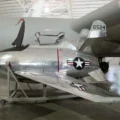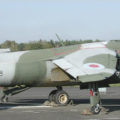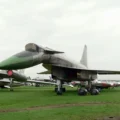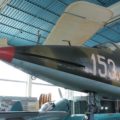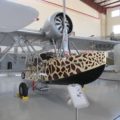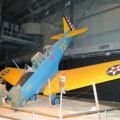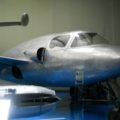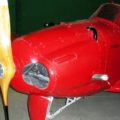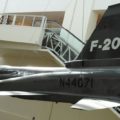
Caproni Campini N.1 | |
|---|---|
| Country | Italy |
| Role | Experimental aircraft |
| First flight | 27 August 1940 |
| Built | 2 |
The Caproni Campini N.1, also known as the C.C.2, was an experimental jet aircraft built in the 1930s by Italian aircraft manufacturer Caproni. The N.1 first flew in 1940 and was briefly regarded as the first successful jet-powered aircraft in history, before news emerged of the German Heinkel He 178’s first flight a year earlier. During 1931, Italian aeronautics engineer Secondo Campini submitted his studies on jet propulsion, including a proposal for a so-called thermo-jet to power an aircraft. Following a high-profile demonstration of a jet-powered boat in Venice, Campini was rewarded with an initial contract issued by the Italian government to develop and manufacture his envisioned engine. During 1934, the Regia Aeronautica (the Italian Air Force) granted its approval to proceed with the production of a pair of jet-powered prototype aircraft. To produce this aircraft, which was officially designated as the N.1, Campini formed an arrangement with the larger Caproni aviation manufacturer.
Source: Caproni Campini N.1 on Wiki
| Campini-Caproni C.C.2 Walk Around | |
|---|---|
| Photographer | Unknow |
| Localisation | Unknow |
| Photos | 47 |
See also:
The Caproni Campini N.1 was an experimental jet aircraft built in the 1930s by Italian aircraft manufacturer Caproni. The N.1 was powered by a motorjet, a type of jet engine that used a conventional piston engine to drive a compressor. The N.1 first flew in 1940 and was briefly regarded as the first successful jet-powered aircraft in history, before news emerged of the German Heinkel He 178’s first flight a year earlier.
The N.1 was the result of a collaboration between Secondo Campini, an Italian engineer who had studied jet propulsion since 1931, and Gianni Caproni, the founder of Caproni, one of the leading Italian aircraft companies. Campini had demonstrated his thermo-jet engine on a boat in Venice in 1934, attracting the interest of the Italian Air Force and the government. Caproni agreed to provide the airframe and the piston engine for the project, while Campini designed the jet system.
The N.1 had a conventional low-wing monoplane design, with a twin-tail configuration and retractable landing gear. The cockpit was located in the nose, with two seats for the pilot and the engineer. The piston engine was mounted in the fuselage behind the cockpit, driving a four-bladed propeller that also acted as a compressor for the jet engine. The compressed air was mixed with fuel and ignited in a combustion chamber at the rear of the fuselage, producing a jet of hot gas that exited through a nozzle.
The N.1 made its first flight on August 27, 1940, at Taliedo, near Milan, piloted by Mario de Bernardi. The flight lasted for 10 minutes and reached a speed of 130 km/h (81 mph). The N.1 performed several test flights over the next year, reaching a maximum speed of 375 km/h (233 mph) and an altitude of 4,000 m (13,000 ft). On November 30, 1941, the N.1 flew from Milan to Rome in one hour and five minutes, with a stopover at Pisa. The flight was widely publicized and celebrated by the Italian media and authorities, who claimed that Italy had achieved a breakthrough in aviation.
However, the N.1 had several limitations and drawbacks. The motorjet engine was inefficient and noisy, consuming a lot of fuel and producing little thrust. The N.1 was slower than some contemporary piston-engined fighters and bombers, and had a short range and endurance. The jet system also generated a lot of heat, requiring constant cooling by air vents and water radiators. Moreover, the N.1 was soon overshadowed by the German Heinkel He 178, which had flown for the first time on August 27, 1939, using a turbojet engine that was more advanced and powerful than the motorjet.
The N.1 program was discontinued in 1943, after Italy surrendered to the Allies during World War II. Only two prototypes were built, one of which is preserved at the Italian Air Force Museum in Vigna di Valle. The N.1 is considered an important milestone in the history of jet propulsion, but also an example of technological obsolescence and failure.
Views : 1552



